
Having arrived in Orkney on Monday evening, it is now Wednesday morning. After two nights of very broken sleep due to coughing bouts, I have given up trying to fight my condition and made an appointment with the local doctor. Since regular RAT testing has been negative, I really need to get something to help. In the meantime, we managed to get around the main attractions yesterday.
Thankfully, the weather continues to be surprisingly good. According to the doctor’s receptionist, it is actually improving by the weekend – we hope this will be country wide for our return to Edinburgh and our trip to Mull next week
Falls of Bruar
We broke our journey north at the Falls of Bruar where there is a substantial retail tourist trap and a much more appealing walk up to the falls, which we decided to tackle. It was a bit of a climb from the lower bridge to the top bridge where the main falls are. Unfortunately, the falls themselves were not very visible, but the trickle of water the lower bridge was very worthy of a photo

Cruise Ships

Orkney Mainland (as the largest island is known as) is very easy to get around. With travel distances between places very short, we covered a few yesterday. The one thing we didn’t anticipate was the numbers of tourists. We discovered from one of the Historic Scotland receptionists that they expect 240 cruise ships during the summer season! When we drove through Kirkwall, there was one docked and one at anchor. We learned that the capacity of that particular ship is 4350, plus crew. It was no wonder that everywhere we went there were coach loads. Our first encounter was with group of Germans – their reputation is second only to Americans when it comes to the world’s worst tourists.
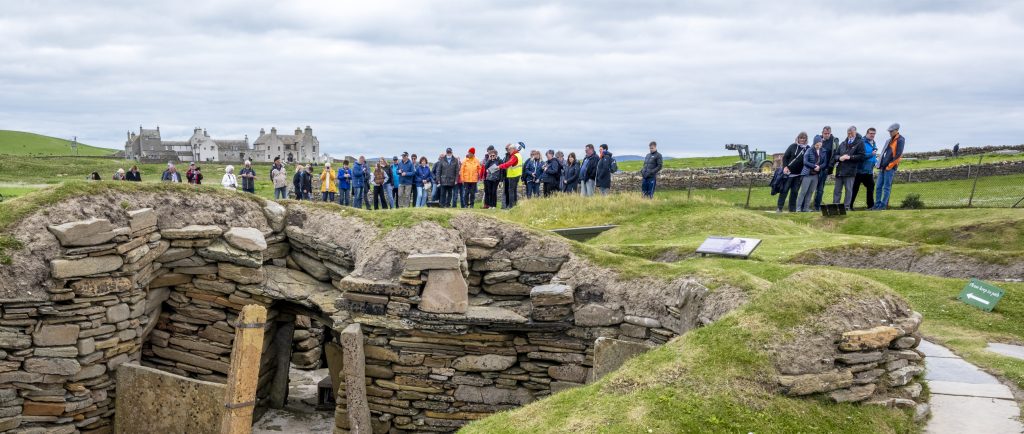
Stones of Stenness
Four of the original twelve 6m upright stones dating back 5000 years remain in place at this site. Organised in a circle with a central ‘hearth’, these were originally surrounded by a large ditch.
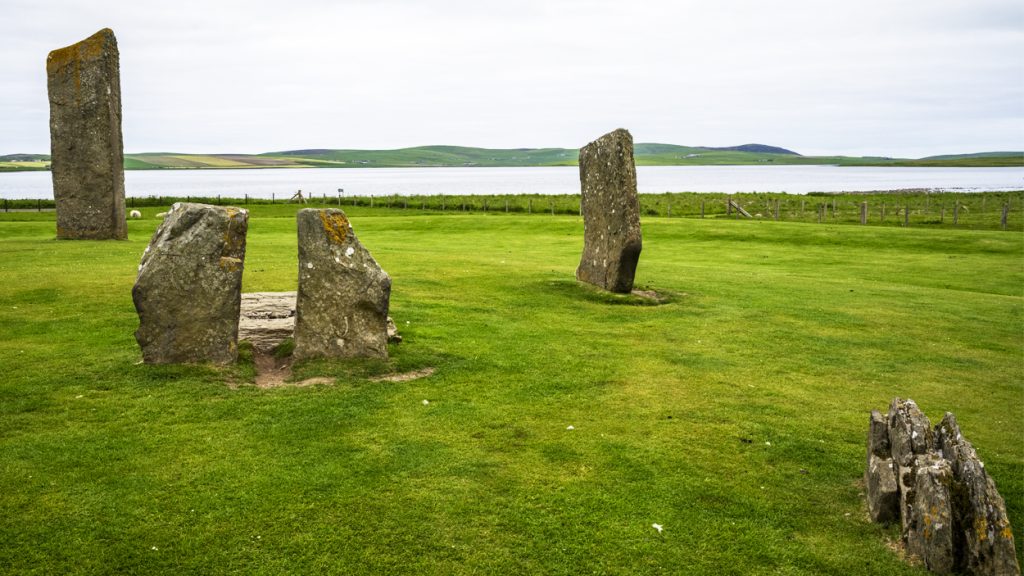
Ring of Brodgar
From the same age, and about a mile up the road is the Ring of Brodgar – a much larger circle of vertical stones, initially comprising 60 stones of which 36 survive. The ring includes 13 prehistoric burial grounds and is surrounded by a deep ditch.
It is believed that both stone circles were used for ceremonial and religious purposes.
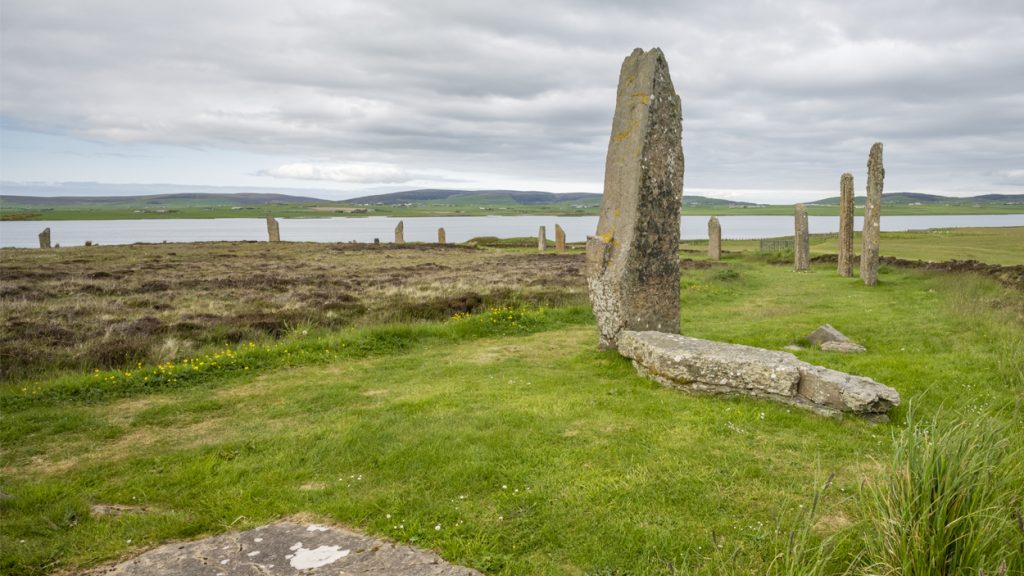
Skara Brae
Skara Brae is a 5000 year old settlement on the edge of Skaill Bay north west coast of the Mainland, discovered only when a major storm hit the island in 1850, ripping off the top layer of the dunes. The storm partially revealed a series of 10 well preserved neolithic underground houses that once accommodated up to 100 people. After the storm, archaeological diggings uncovered a large number of artefacts and clues about how the small community lived. What remains a mystery is the circumstances around the demise of the community about 2500 years ago.
The site is well managed by Historic Scotland, with paved paths around the top of the diggings and information signs at relevant points. There was a time when visitors could wander through the houses, but with the hordes of tourists this has, quite rightly been stopped.
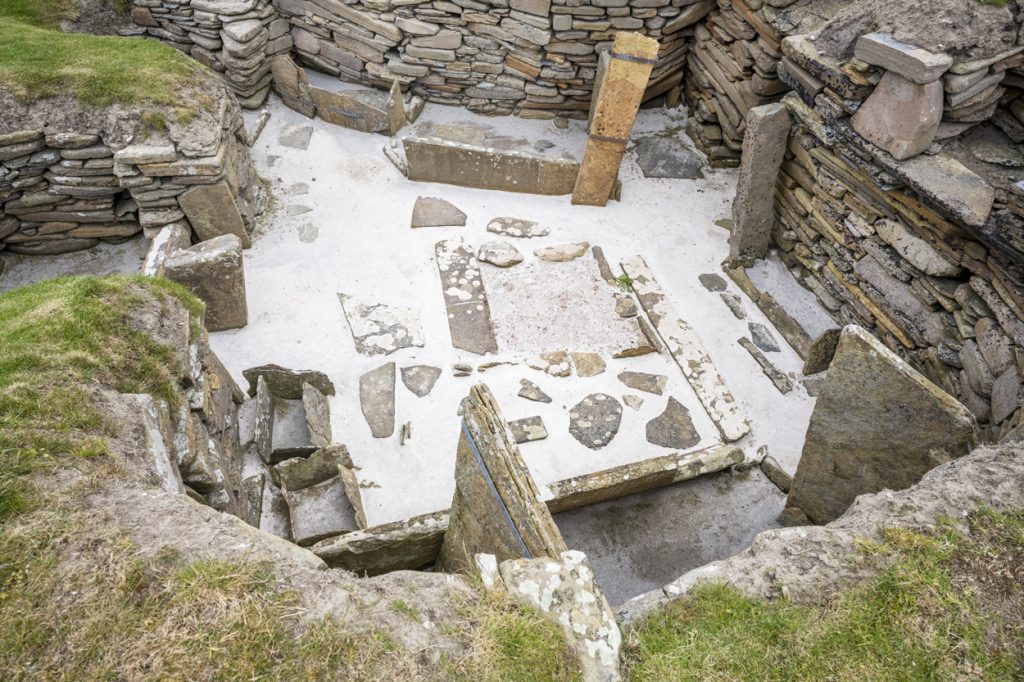
For more information: Skara Brae
The Churchill Barriers
During WWII, Scapa Flow was used as a base for allied Naval Fleets due to its naturally protected perimeter. However, in October 1939 a U-boat commander managed to sneak in and sink the aircraft carrier ‘Royal Oak’, killing more than 800 men. In order to make the area safe, it was decided to seal the eastern entrances with barriers of stone and concrete.
Winston Churchill had visited the site to inspect its security and, while first reports indicated that he was satisfied, work commenced on four major barriers, a total length of 1.5 miles across narrow eastern entries. Work initially was undertaken by local workers, but this proved too difficult.
The solution was to use several hundred Italian POWs, captured during the Africa Campaign. Camps with a range of facilities were set up to accommodate the men. The completed barriers proved successful, with the odd scuttled ship helping. Nowadays, they are an essential part of the road infrastructure of the island.
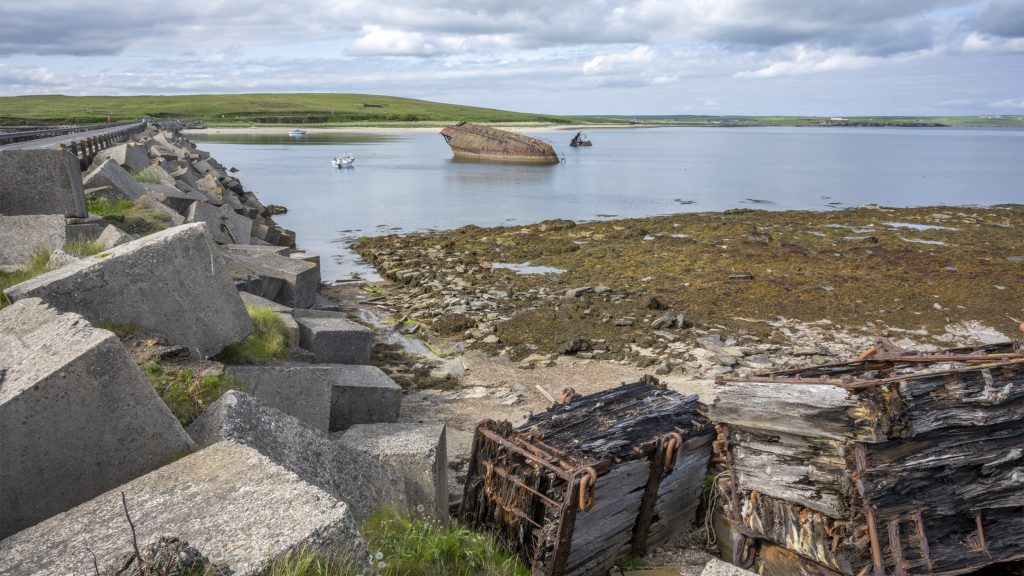
Italian Chapel
The one missing building at the prisoners’ camp was a chapel.
With the arrival of a new camp commandant and a new padre, the camp inmates started work on a building a chapel. I late 1943, two Nissan huts were made available to the men. Joining these together, end to end, created the body of the chapel, with a chancel at the opposite end to the main entrance. The entrance is a masterpiece of deception, hiding the ugliness of the huts behind.

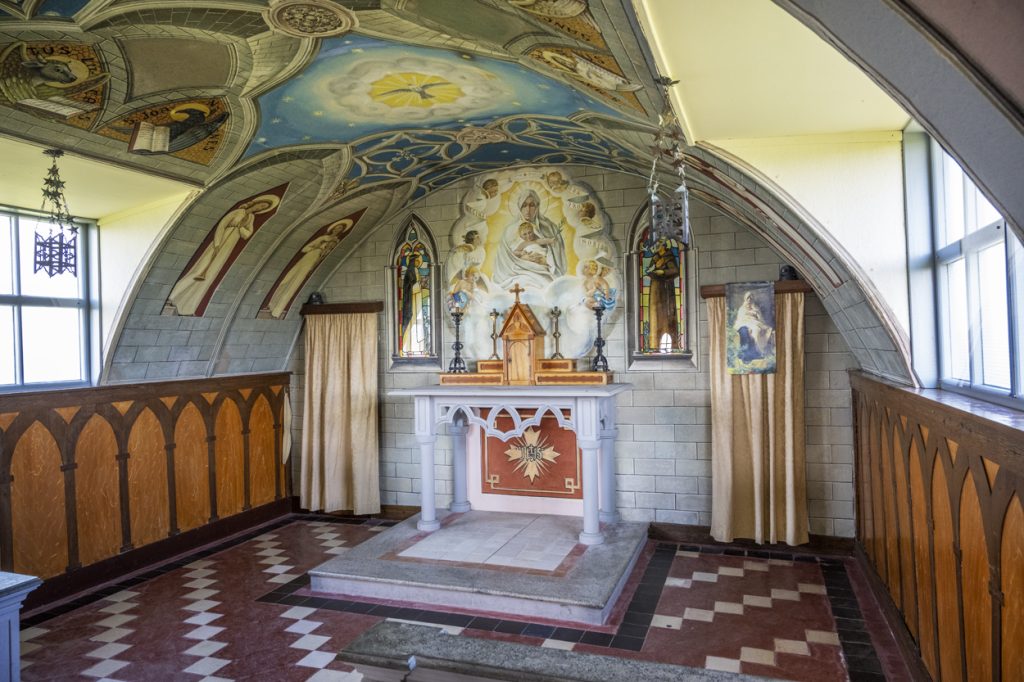
Sadly, the chapel was only in use for a very short time before the end of the war and the departure of the prisoners in September 1944. In the early 1960’s, deteriorating elements of the chapel were restored and the whole building treated to preserve it for the future.
For more information: Italian Chapel
Doctor’s Orders
The outcome of my visit to the doctor was that it seems I have endured two separate consecutive issues, the latter being diagnosed as Bronchitis. I was prescribed Penicillin, so hopefully that will help my recovery. It was a very odd feeling leaving the surgery without having to flash my credit card and again at the pharmacy. K seems not to be as sick as I have been – fingers crossed that she recovers quickly.
Details of our Orkney day two to follow.
